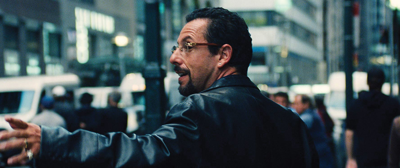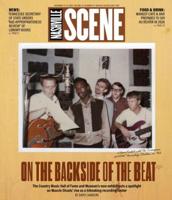
The Safdie brothers — two of the most distinctive American filmmakers to emerge in the past decade, anointed by critics as something like the next Scorsese or Ferrara — are obsessed with capturing a New York unseen by most moviegoers. Their breakout feature Heaven Knows What attempts to capture as faithfully as possible the interior lives and survival tactics of the city’s marginalized homeless population, while 2017’s Good Time unfolds in the deep parts of Queens where trains, tourists and camera crews rarely venture.
Uncut Gems, Josh and Benny Safdie’s latest and most ambitious effort to date, is about another unseen New York — a city quite literally impossible for most of us to enter, an endless barrage of iron-clad doors, bulletproof glass and Upper West Side apartments accessible only to the tippy-top echelons of influence and power. This is a world that’s all about knowing the right people, who can let you in the right places, and there’s always another bouncer or buzzer or velvet rope to remind you of your shortcomings. And the only way to know the right people? Amassing massive amounts of financial capital.
The Safdies have found an ideal leading man in Adam Sandler, a performer as unhinged as the lifestyles they depict. Sandler plays Howard Ratner, a Midtown jewelry dealer desperately trying to keep it all together. He’s always three chess moves ahead while everybody else is playing checkers. But the only thing bigger than the rocks Ratner moves is his gambling addiction, and time is running out on the many debts he’s accrued.
Our protagonist is a little bit like Jerry Lewis with a frustrated libido, his own development arrested while the rest of the world moves on. Sandler’s energy here is still deeply childish and chaotic, but for once, the rest of the world is in step with his tempo; it’s not that the Sandman is a chaotic center that threatens to destabilize society — it’s that society itself is chaos, and there is no center. Like a rare gem under the magnifying glass, Ratner is someone you can peer into but never really possess. The Safdies are less interested in emotion or internal motivation than they are in action and instantaneous decisions, frequently dumping their protagonists into situations with no room for thought or space for reflection, just the immediacy of the moment. Their movies are like a crowded city block, a constant gauntlet of elbows and no way out but forward. There’s hardly enough room to make a decision, let alone weigh all your options.
Uncut Gems works as a perfectly pitched period piece about a bygone gilded age, halfway through the Obama years, the sheen of Hope and Change slightly dulled by a looming storm still mostly unnoticed in the distance. In addition to a relentless score by regular Safdies collaborator Daniel Lopatin (better known as electronic artist Oneohtrix Point Never), the film is stuffed with rap hits from earlier in the decade (including Rich Homie Quan’s “Type of Way,” Meek Mill’s “Amen” and Waka Flocka Flame’s “Hard in da Paint”) as well as cameos from The Weeknd and Trinidad James as their younger selves.
The Safdies fill their world with richly detailed supporting characters: fashion designer Julia Fox as Ratner’s sales assistant and ride-or-die mistress, Lakeith Stanfield as Ratner’s connection to a world of rappers and athletes willing to drop stacks on diamond-studded Furbies, Eric Bogosian as a solemn loan shark, Kevin Garnett (playing himself) as both a motivating plot device and the movie’s spiritual center. We’re thrust into these relationships with little context, which works given the high stakes and overall intensity, but more often than not I found myself hungering for even more time in these spaces, more history about Ratner’s relationships with the varied and distinctive individuals that populate his life. Where Uncut Gems struggles to keep its edges sharp is when it makes larger connections between Ratner’s own insatiable appetites and global capitalism. They’re thankfully not overemphasized, but the links established between the exploitative African diamond trade and self-destructive American desires were better articulated by Kanye West in “Diamonds From Sierra Leone” more than a decade ago.
In a recent New York Times Magazine article about Sandler — his first magazine profile in more than two decades — the Safdies mention that they don’t have “the greatest imagination,” and instead harness stories into shape based on incidents and interactions they observe unfolding in reality, rather than inventing it all on their own. That lack of imagination seems to me a fundamental problem in their work: their regurgitations of pseudo-reality are merely re-creation, without the additional benefit of a more coherent political framework.
For the Safdies, capitalism is an endless rat race: at first, we’re all just running in circles trying to beat each other, until we realize there’s nothing to win, no prize, no after-party, not even an end or exit except death itself. The brothers excel at articulating specific kinds of suffering under capitalism, how our economic system isolates, alienates and eventually turns us all against each other. Leave rats trapped in a dark box long enough and eventually they’ll go cannibalistic. But any kind of real sociopolitical critique that emerges in their work feels largely accidental, the natural by-product of examining protagonists who hustle and scheme on the edges of acceptable society. The Safdies are deep in the same rat race they’re trying to depict, heads down, unable to see the light of a better future.





